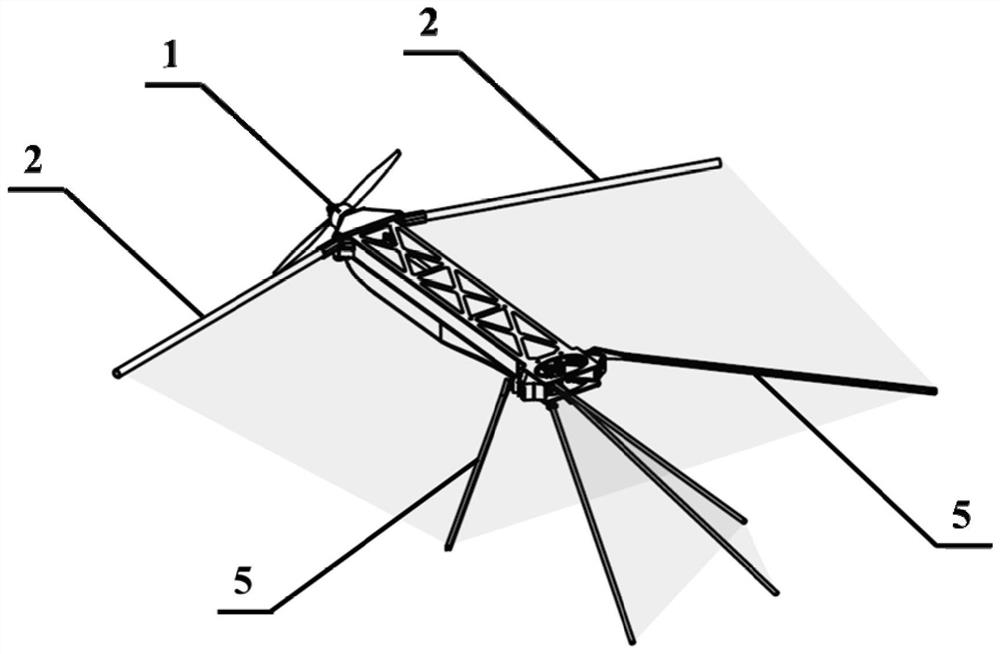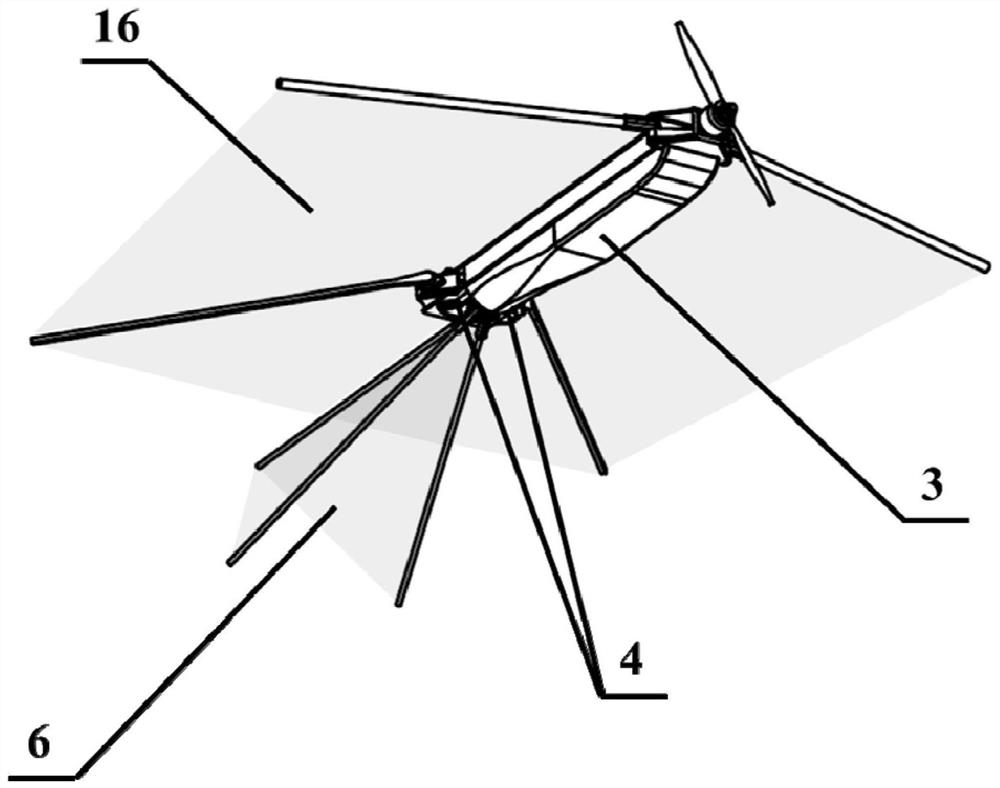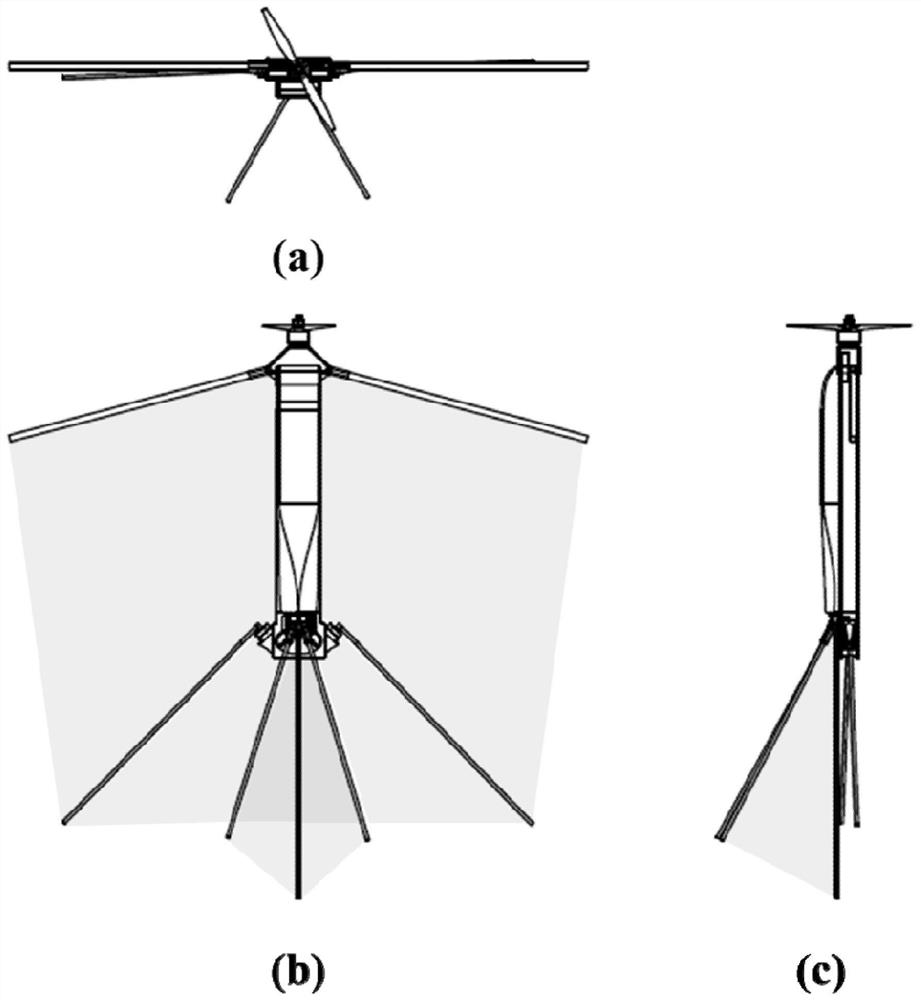Bionic folding unmanned aerial vehicle using flexible airfoil
A technology using flexible and unmanned aerial vehicles, applied in the directions of unmanned aerial vehicles, wings, motor vehicles, etc., can solve the problems of insufficient maneuverability of aircraft, small wing area, difficult reconnaissance operations, etc., to improve flexibility, Large wing area, the effect of reducing flight speed
- Summary
- Abstract
- Description
- Claims
- Application Information
AI Technical Summary
Problems solved by technology
Method used
Image
Examples
Embodiment Construction
[0041] The technical solutions in the embodiments of the present invention will be clearly and completely described below in conjunction with the accompanying drawings in the embodiments of the present invention. Obviously, the described embodiments are only for illustration and are not intended to limit the present invention.
[0042] The invention proposes a bionic folding UAV using a flexible wing surface. The typical size is a wingspan of 200-600mm, the flight weight of the UAV is about 150-600g, and the typical length is 200-600mm. After folding, it can be stored in a In a cuboid with a side length of no more than 40mm*70mm, the cruise speed of the aircraft is about 10m / s-20m / s, and the flight time is about 30min. It can be used for reconnaissance and strike missions carried by individual soldiers, and can also be used for long-distance airdrop combat missions of small and medium-sized UAVs.
[0043] Such as Figure 1-3 As shown, the structure of the bionic folding UAV usi...
PUM
 Login to View More
Login to View More Abstract
Description
Claims
Application Information
 Login to View More
Login to View More - R&D
- Intellectual Property
- Life Sciences
- Materials
- Tech Scout
- Unparalleled Data Quality
- Higher Quality Content
- 60% Fewer Hallucinations
Browse by: Latest US Patents, China's latest patents, Technical Efficacy Thesaurus, Application Domain, Technology Topic, Popular Technical Reports.
© 2025 PatSnap. All rights reserved.Legal|Privacy policy|Modern Slavery Act Transparency Statement|Sitemap|About US| Contact US: help@patsnap.com



